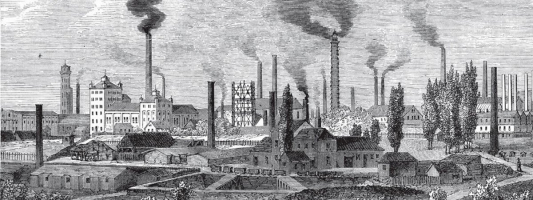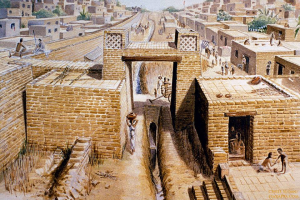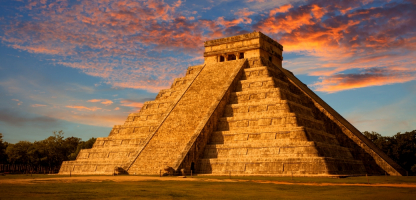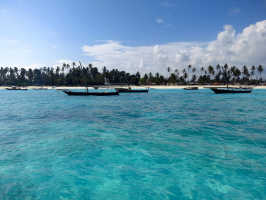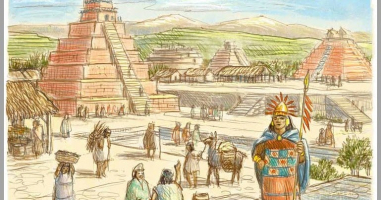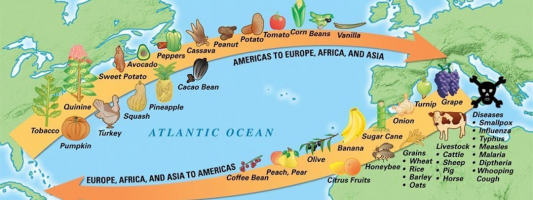Top 8 Interesting Facts About The 1815 Eruption of Mount Tambora
Mount Tambora, also known as Tomboro, is an active stratovolcano in the Indonesian province of West Nusa Tenggara. It was produced by active subduction zones ... read more...beneath Sumbawa in the Lesser Sunda Islands. Its elevation before 1815 reached more than 4,300 meters (14,100 feet), making it one of the highest peaks in the Indonesian archipelago. Tambora erupted fiercely beginning on April 5, 1815, culminating in the greatest eruption in recorded human history and the largest of the Holocene. Here are the 8 interesting facts about the 1815 eruption of Mount Tambora.
-
One of the interesting facts about the 1815 eruption of Mount Tambora is that it lowered global temperatures by 0.4–0.7 °C (0.7–1.3 °F). A volcanic winter resulted from the eruption. Global temperatures fell by 0.53 °C (0.95 °F) during the summer of 1816 in the Northern Hemisphere. This extreme cooling directly or indirectly resulted in the deaths of 90,000 people. The most prominent cause of this climate anomaly was the eruption of Mount Tambora. While additional eruptions occurred in 1815, Tambora was classified as a VEI-7 eruption with a column 45 km (148,000 ft) tall, dwarfing all others by at least one order of magnitude.
Average worldwide temperatures fell by 0.4 to 0.7 °C (0.7 to 1.3 °F), causing serious agricultural concerns around the world. Frosts were observed in the upper elevations of New Hampshire, Maine, Vermont, and northern New York on June 4, 1816. Snow fell in Albany, New York, and Dennysville, Maine on June 6, 1816. On June 8, 1816, the snow cover in Cabot, Vermont was still 46 cm (18 in) deep. Such circumstances persisted for at least three months, destroying the majority of agricultural crops in North America. During the summer, Canada faced a significant cold. From June 6 to 10, 1816, 30 cm (12 in) of snow fell in Quebec City.
The year 1816 was the second-coldest in the Northern Hemisphere since roughly 1400, while the 1810s were the coldest decade on record. That was the result of Tambora's 1815 eruption, as well as a possible VEI-6 eruption in late 1808. During the summers of 1816, 1817, and 1818, the surface temperature anomalies were 0.51 °C (0.92 °F), 0.44 °C (0.79 °F), and 0.29 °C (0.52 °F), respectively. Winter was also harsher in parts of Europe.
The magnitude of the volcanic eruption will influence the impact on temperature and other chemical processes, but a change will be detected even in the most remote places. Volcanoes spew carbon dioxide (CO2), water, hydrogen, sulfur dioxide (SO2), hydrogen chloride, hydrogen fluoride, and a variety of other gases when they erupt. Meronen and colleagues (2012) CO2 and water are both greenhouse gases, accounting for 0.0394 and 0.4 percent of the atmosphere, respectively. Their modest size conceals their important significance in capturing solar insolation and reradiating it back to Earth.
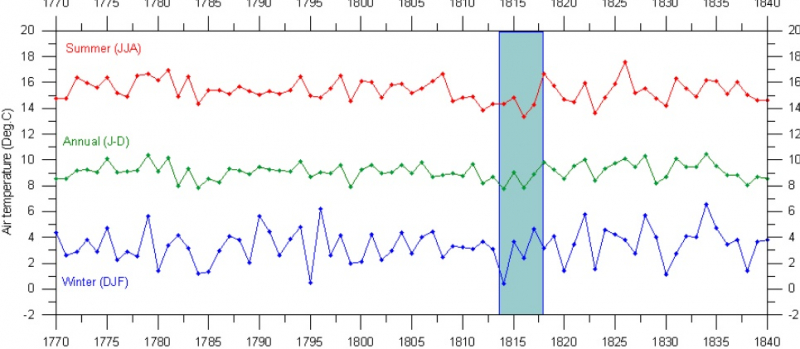
climate4you.com 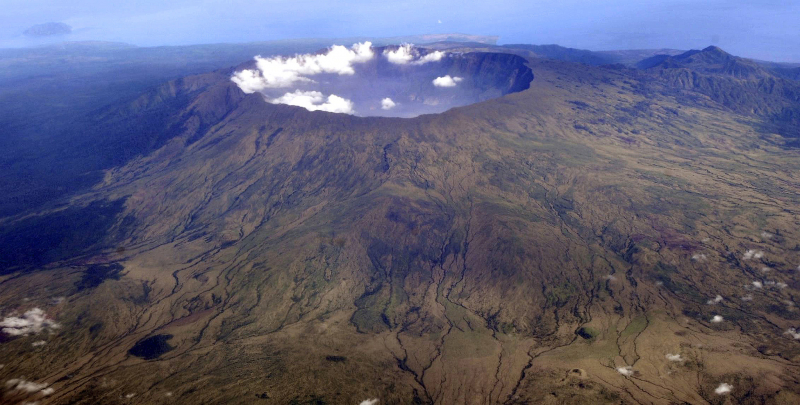
nytimes.com -
Because of severe climate anomalies that caused average global temperatures to drop by 0.4-0.7 °C (0.7-1 °F), the year 1826 is known as the Year Without a Summer. Summer temperatures in Europe were the coldest on record from 1766 to 2000. This resulted in severe food shortages throughout the Northern Hemisphere.
The evidence suggests that the anomaly was primarily a volcanic winter event caused by Mount Tambora's massive 1815 eruption in April in the Dutch East Indies known today as Indonesia. This eruption was the largest in at least 1,300 years (after the hypothesized eruption that caused the volcanic winter of 536), and it was possibly exacerbated by the 1814 eruption of Mayon in the Philippines.
Tephra levels in the atmosphere were high enough that a haze hung over the sky for a few years following the eruption, as well as vivid crimson hues in sunsets. Paintings from the years before and after the eruption of Mt. Tambora demonstrate that these vibrant reds did not exist prior to the eruption.
The Year Without a Summer was a farming disaster. According to historian John D. Post, this is the last serious subsistence crisis in the Western world. The 1816 climatic anomalies had the biggest impact on most of New England, Atlantic Canada, and sections of western Europe.
According to a 2012 study by Berkeley Earth Surface Temperature, the 1815 Tambora eruption caused a 1°C decline in the Earth's average land temperature. Temperature decreases were smaller during the 1812-1814 eruptions. The Earth had already been experiencing centuries of global cooling, which began in the 14th century. The Little Ice Age, as it is now known, had already caused significant agricultural misery throughout Europe. The existing freezing of the Little Ice Age was worsened by the Tambora eruption, which occurred at the conclusion of the Little Ice Age. This period also coincided with the Dalton Minimum (a period of low solar activity), notably Solar Cycle 6, which lasted from December 1810 to May 1823. May 1816 had the lowest sunspot number (0.1) ever recorded since records of solar activity began. During this time, the shortage of solar irradiance was worsened by atmospheric opacity caused by volcanic dust.
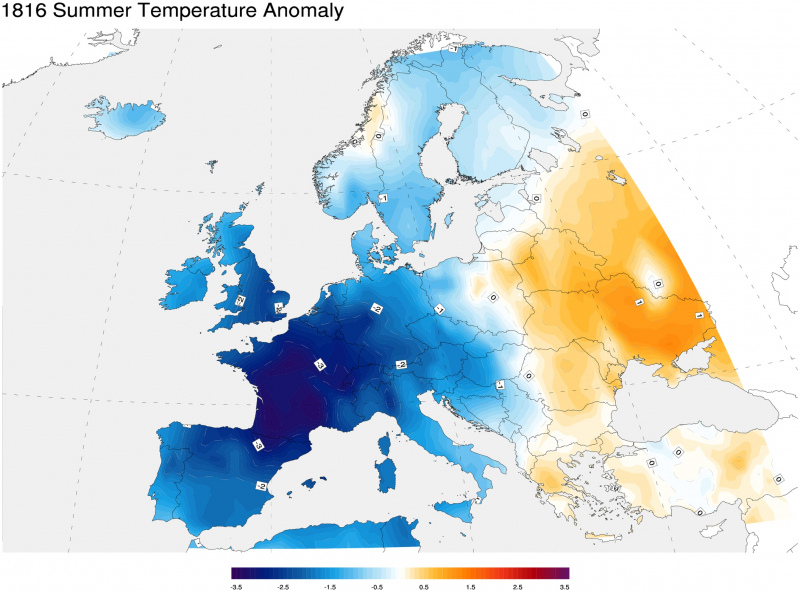
en.wikipedia.org 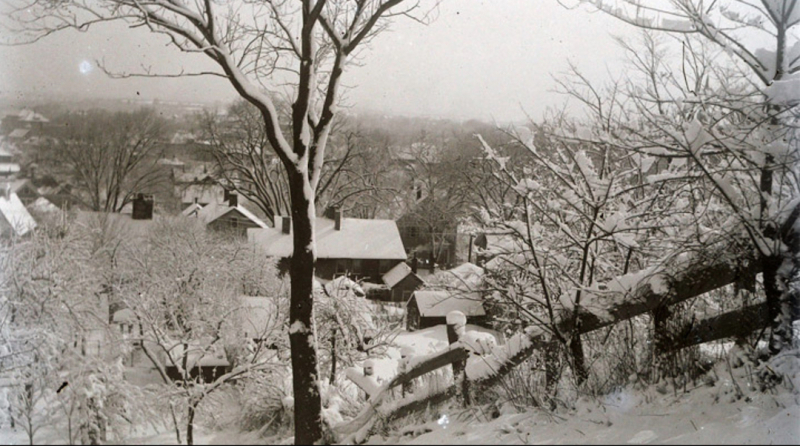
archive.org -
Before 1815, Mount Tambora was dormant for numerous centuries due to the gradual cooling of hydrous magma in its locked magma chamber. Exsolution of a high-pressure fluid magma created after cooling and crystallization of the magma inside the chamber at depths ranging from 1.5 to 4.5 km (5,000 to 15,000 ft). The chamber was over-pressurized by around 4,000-5,000 bar (400-500 MPa; 58,000-73,000 psi), and temperatures in the area of Mt. Tambora were from 700 to 850 °C (1,300-1,600 °F). The volcano began to rumble and emitted a dark cloud in 1812. On 5 April 1815, a massive eruption occurred, followed by thunderous detonation sounds audible in Makassar, Sulawesi, 380 km (240 mi), Batavia, Java, 1,260 km (780 mi), and Ternate, Molucca Islands, 1,400 km (870 mi). Volcanic ash began to descend in East Java on April 6, with minor detonation sounds lasting until April 10. On 10 April, what was initially considered to be the sound of firing guns was heard on Sumatra, more than 2,600 km (1,600 mi) away.
The eruptions accelerated at about 19:00 on April 10. Three plumes ascended to the surface and mingled. The entire mountain was transformed into a raging mass of "liquid fire". Around 20:00, pumice stones up to 20 cm (8 in) in diameter began to shower down, followed by ash around 21:00-22:00. On all sides of the peninsula, pyroclastic flows cascaded down the mountain to the sea, obliterating the settlement of Tambora. Explosions could be heard till the next evening, April 11th. The ash cloud reached West Java and South Sulawesi. A nitrous odor was detected in Batavia, and heavy tephra-tinged rain occurred, eventually clearing between April 11 and 17.
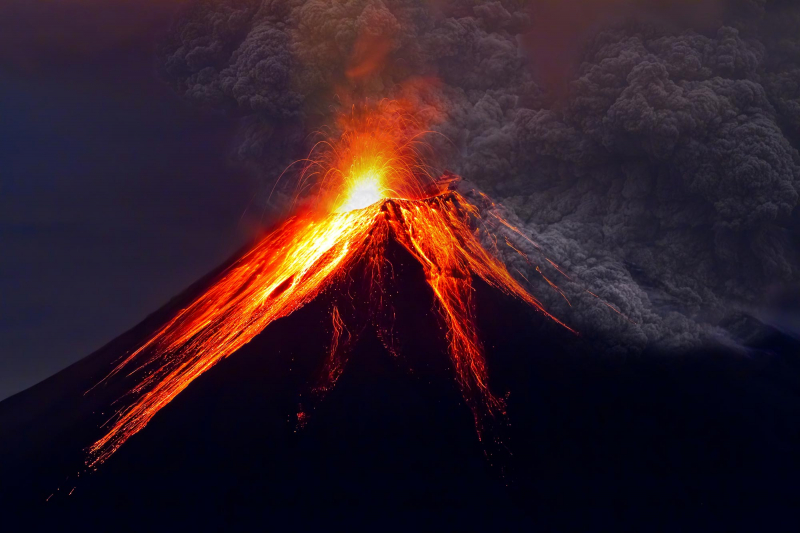
scitechdaily.com 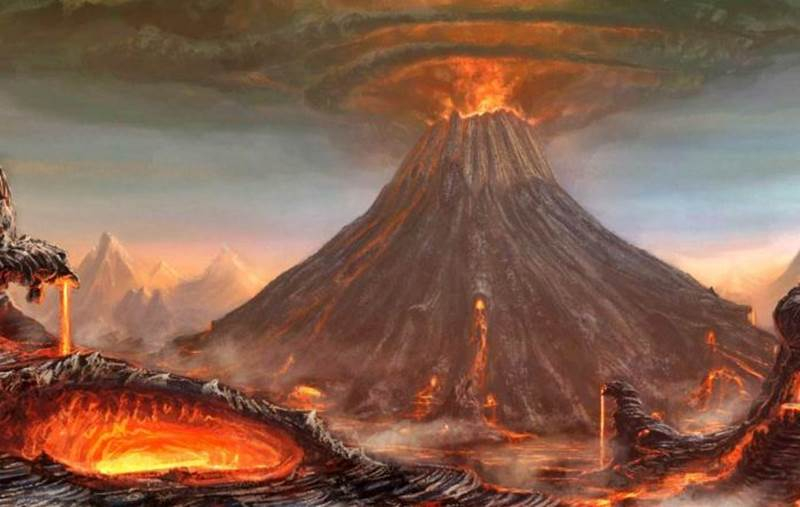
onthisday.com -
While additional eruptions occurred in 1815, Tambora was classified as a VEI-7 eruption with a column 45 km (148,000 ft) tall, dwarfing all others by at least one order of magnitude. The VEI of the explosion was calculated to be 7. An estimated 41 km3 (10 cu mi) of pyroclastic trachyandesite weighing approximately 10 billion tonnes was expelled. This resulted in a caldera 6-7 km (3+1⁄2–4+1⁄2 mi) broad and 600–700 m (2,000-2,300 ft) deep. In Makassar, the density of fallen ash was 636 kg/m3 (39.7 lb/cu ft). Mount Tambora's peak elevation was around 4,300 m (14,100 ft) prior to the explosion, making it one of the tallest peaks in the Indonesian archipelago. Its peak elevation had reduced to only 2,851 m (9,354 ft) after the explosion, roughly two-thirds of its prior height.
The VEI is used to calculate the amount of material expelled, with a VEI-7 equaling 100 km3 (24 cu mi). Every index number lower than that is one order of magnitude (10 times) less. Furthermore, the 1815 eruption happened during a Dalton Minimum, which was characterized by exceptionally low solar radiation. Volcanism has a significant impact on climate change, both locally and internationally. This was not always recognized and did not become scientific truth until the 1883 Krakatoa eruption turned the skies orange.
The Tambora eruption of 1815 was the greatest recorded eruption in history. The explosion could be heard 2,600 kilometers (1,600 miles) away, and ash fell at least 1,300 kilometers (810 miles) away.
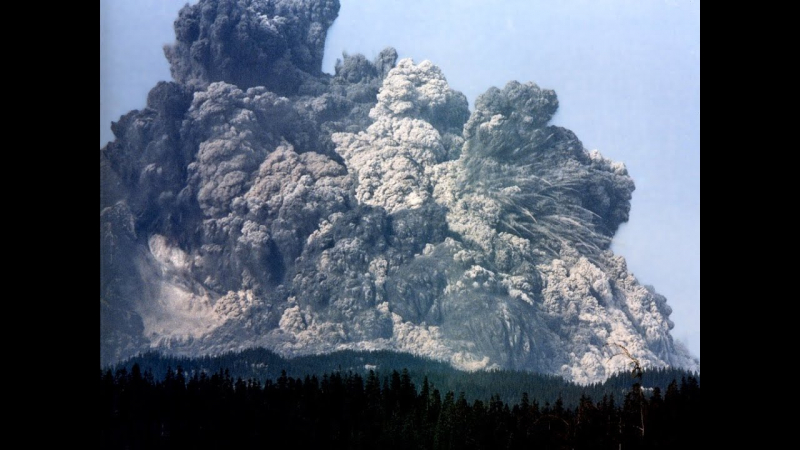
alchetron.com 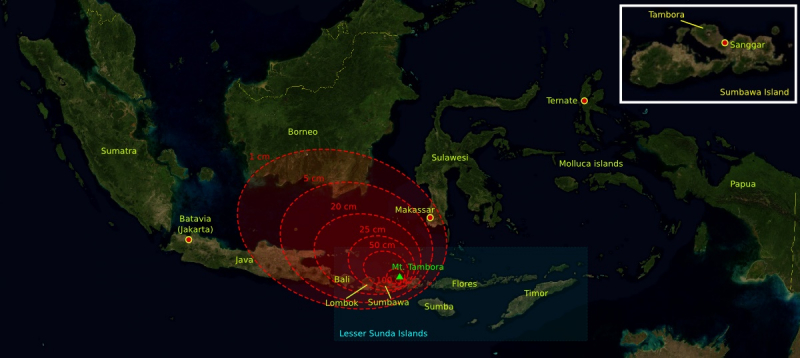
wikiwand.com -
One of the interesting facts about the 1815 eruption of Mount Tambora is that the eruption released160-213 cubic meters of rock. The Volcanic Explosivity Index (VEI) is a measure of how explosive volcanic eruptions are. Chris Newhall of the US Geological Survey and Stephen Self of the University of Hawaii invented it in 1982. The explosivity value is calculated using the volume of products, the height of the eruption cloud, and qualitative observations (using phrases ranging from "gentle" to "mega-colossal"). The scale is arbitrary, with the greatest eruptions in history being assigned a magnitude of 8. A number of 0 represents non-explosive eruptions, defined as less than 10,000 m3 (350,000 cu ft) of ejected tephra, while a value of 8 represents a mega-colossal explosive eruption capable of ejecting 1.01012 m3 (240 cubic miles) of tephra and having a cloud column height of more than 20 km (66,000 ft). Except for the intervals between VEI-0, VEI-1, and VEI-2, the scale is logarithmic, with each interval reflecting a tenfold increase in the reported ejecta criterion.
Mount Tambora's 1815 explosion was the most powerful volcanic eruption in recorded human history. This Volcanic Explosivity Index (VEI) 7 eruption, the most recent documented VEI-7 eruption, released 160–213 cubic kilometers (38-51 cubic miles) of material into the atmosphere.
Although the Mount Tambora eruption reached a spectacular climax on 10 April 1815, there were increased steaming and small phreatic eruptions throughout the next six months to three years. In 1816, the ash from the eruption column diffused over the planet, lowering global temperatures in an occurrence known as the Year Without a Summer. This brief era of significant climate change resulted in severe weather and crop failures in many parts of the world. Several climate forcings coincided and interacted in a systematic way not seen after any other major volcanic eruption since the early Stone Age.
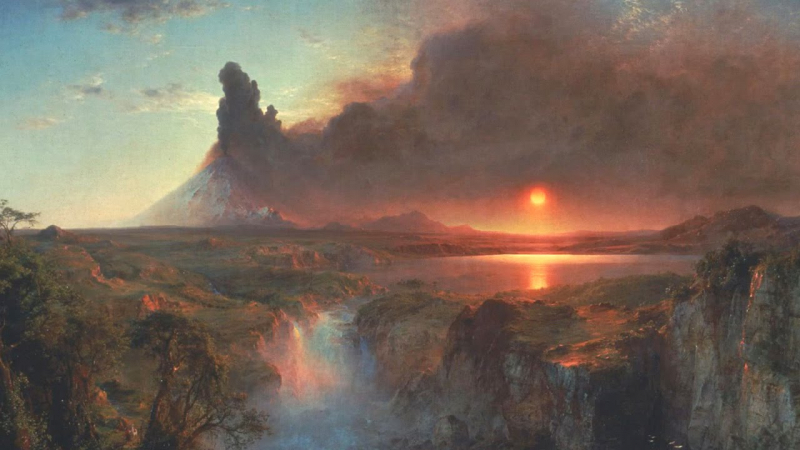
youtube.com 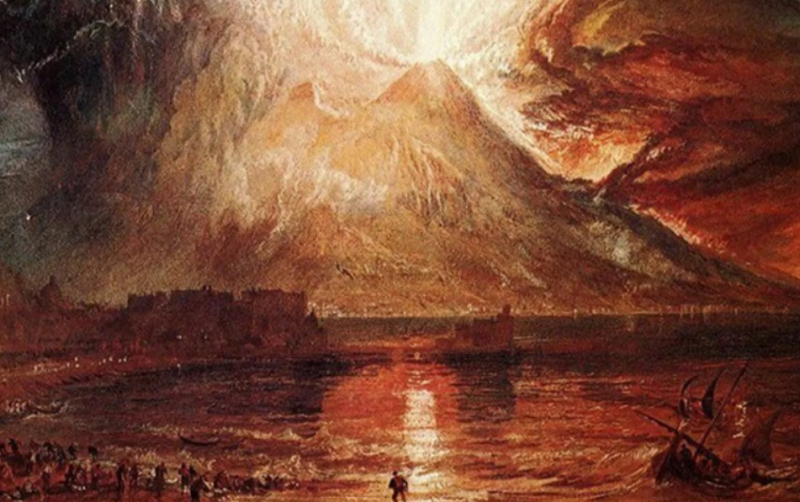
theguardian.com -
According to Zollinger (1855), 10,000 people died directly as a result of pyroclastic flows. In Sumbawa, 18,000 people died from starvation or sickness. Disease and starvation killed around 10,000 people in Lombok. According to Petroeschevsky (1949), approximately 48,000 people were killed in Sumbawa and 44,000 in Lombok. Petroeschevsky's allegation of 88,000 deaths was acknowledged by Stothers and several other authors in 1984. However, J. Tanguy and others asserted in a 1998 journal paper that Petroeschevsky's figures were erroneous and based on untraceable references. Tanguy's revised death toll was based on Zollinger's work on Sumbawa for several months following the eruption, as well as records by Thomas Raffles.
Tanguy speculated that there could have been more victims in Bali and East Java as a result of starvation and sickness. They estimated 11,000 deaths as a result of direct volcanic effects and 49,000 as a result of post-eruption hunger and epidemic diseases. According to Oppenheimer, there were at least 71,000 deaths in total. Reid estimates that nearly 100,000 people died as a result of the eruption's direct and indirect consequences on Sumbawa, Bali, and other regions.
Cholera already existed before the eruption, but the colder temperatures caused by Tambora’s eruption led to the development of a new strain in the Bay of Bengal. Fewer people had immunity to this new strain of cholera, which then spread throughout the world.
According to Gillen D'Arcy Wood, author of Tambora: The Eruption That Changed the World, considerably more people died over the next several years as a result of secondary consequences that spread all across the world. He claimed that three years of climate change occurred following Tambora. For three years, the world became colder, and weather patterns shifted dramatically. As a result, crop failure and malnutrition were rampant from Asia to the United States to Europe ( Becky Little, 2018).
If volcanic eruptions near the equator are powerful enough to spew gases into the stratosphere, they can trigger worldwide weather shifts. Because it is too high to be washed away by rain, this gas becomes trapped and travels down the equator before spreading out toward the poles. This reduces the amount of heat from the sun that goes through the stratosphere.
This has far-reaching consequences for the ecology in which you live, not just whether you should wear a sweater or not. Cooling temperatures caused by Tambora's eruption resulted in diminished rainfall, ruined crops, and catastrophic hunger in many regions of the world. According to Wood, it is difficult to estimate how many people perished as a result of starving circumstances, but the death toll is certainly about a million people, at least, in the years that followed. If you incorporate the fact that Tambora caused a global cholera pandemic, the death toll rises into the tens of millions.
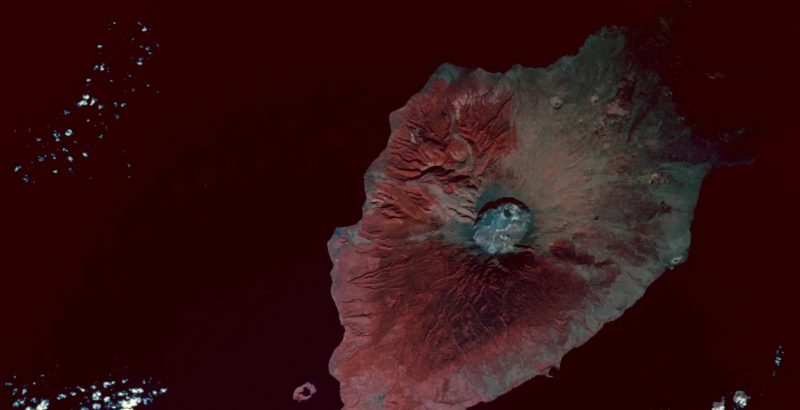
wired.com 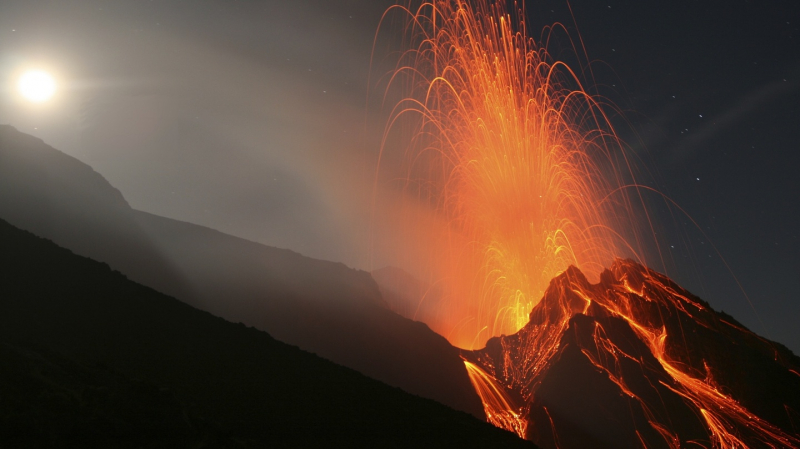
irishtimes.com -
One of the interesting facts about the 1815 eruption of Mount Tambora is that Mount Tambora is known as the Pompeii of the East. In 2004, a team of scientists from the University of Rhode Island and the Indonesian Directorate of Volcanology and Geological Hazard Mitigation began excavating Tambora, an Indonesian settlement buried almost two centuries ago by the greatest recorded volcanic eruption.
Scientists uncovered the settlement and two adults buried in roughly 10 feet (3 m) of ash in a valley on the volcano's flank – vestiges of Tambora's previous Kingdom preserved by the 1815 eruption that destroyed it. The Tambora relics' likeness to those linked with Mount Vesuvius' eruption in the year 79 has led to the Tambora site being described as "the Pompeii of the East," according to a NASA release.
The excavation demonstrates how a pyroclastic torrent of hot volcanic ash, rock and volcanic gas destroyed Tambora's 10,000 occupants in seconds. Three meters of volcanic material smothered the community. 117,000 people died in total.
According to Richard Lewis, Tambora was discovered by scientists with the assistance of a local guide, who told them that pottery fragments and human bones had been discovered in a gully. Scientists uncovered an entombed house with two occupants inside during the mid-2004 dig.
One woman was discovered in the kitchen, her hand next to glass bottles melted by the ash flow. The house, which was built on wooden stilts with bamboo siding and a thatched roof, had been burnt into charcoal by the scorching ash, which Sigurdsson estimated to be at least 538°C.
According to Sigurdsson, the discovery is noteworthy because it means that in an eruption such as that in 1815, pyroclastic flows extend from the volcano in all directions to a distance of at least 40 kilometers radially, and within that zone... there is an extinction of all species.
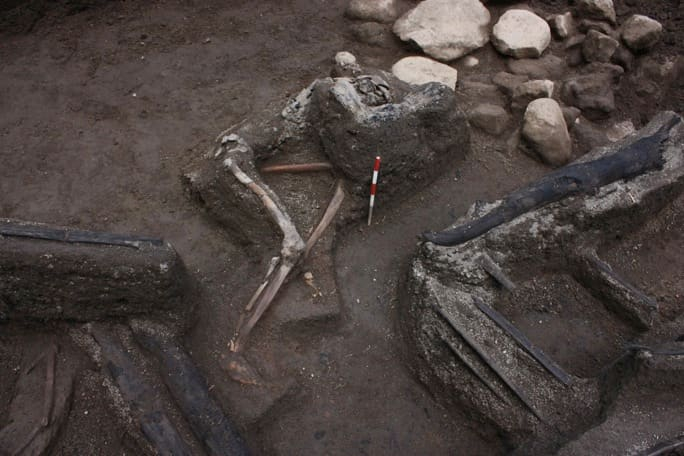
discover.hubpages.com 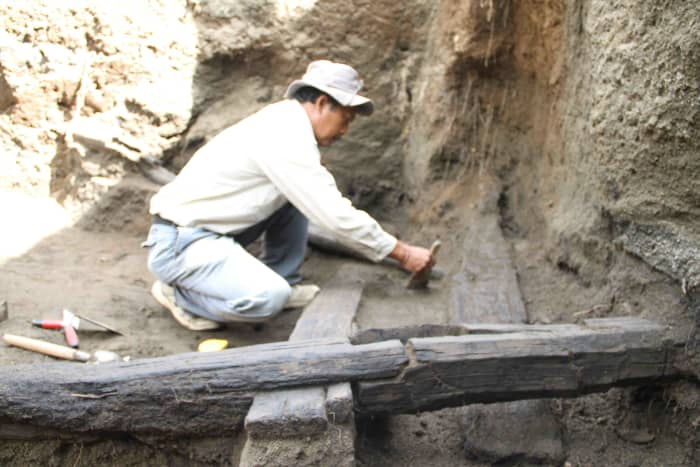
discover.hubpages.com -
The 1815 eruption of Mount Tambora is one of the greatest environmental disasters. The island's vegetation was completely decimated. Uprooted trees and pumice ash washed into the sea, forming rafts up to five kilometers (three miles) across. The British ships Fairlie and James Sibbald encountered massive pumice rafts around 3,600 kilometers (2,200 mi) west of Tambora between October 1 and 3. On April 23, dense ash clouds still shrouded the peak. Explosions stopped on July 15, however smoke emissions were detected as late as August 23. Four years after the event, flames and rumbling aftershocks were recorded.
On 10 April, a moderate-sized tsunami devastated the beaches of different Indonesian islands, reaching heights of up to 4 m (13 ft) near Sanggar around 22:00. Before midnight, a tsunami of 1-2 m (3-7 ft) in height was reported in Besuki, East Java, and one of 2 m (7 ft) in height in the Molucca Islands. The total number of fatalities is expected to be around 4,600.
The eruption column reached the stratosphere at a height of more than 43 kilometers (141,000 ft). The coarser ash particles settled out within one to two weeks of the eruptions, but the finer ash particles remained in the sky for months to years at altitudes of 10-30 km (33,000-98,000 ft). Longitudinal winds blow these small particles all over the world, causing visual phenomena. Sunsets and twilights were regularly witnessed in London between June 28 and July 2, 1815, and between September 3 and October 7, 1815. The dusk sky's radiance was often orange or red towards the horizon and purple or pink above.
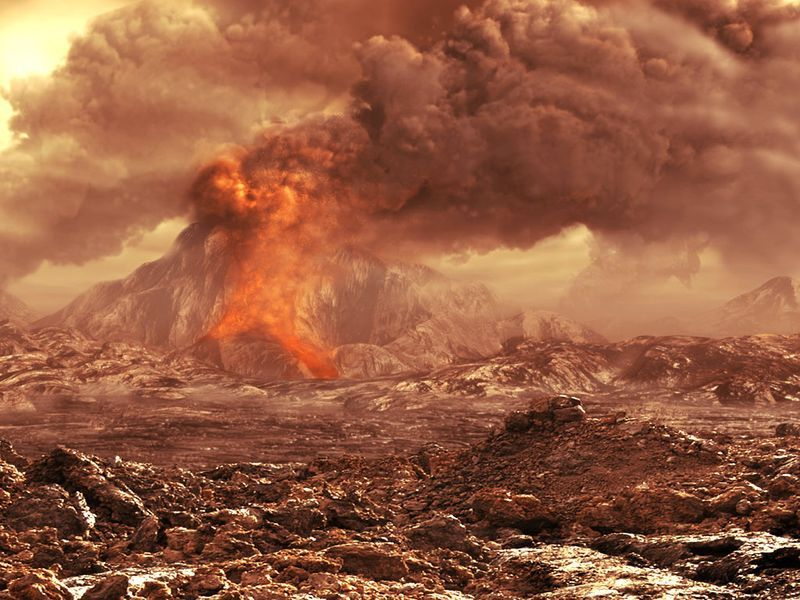
pinterest.com 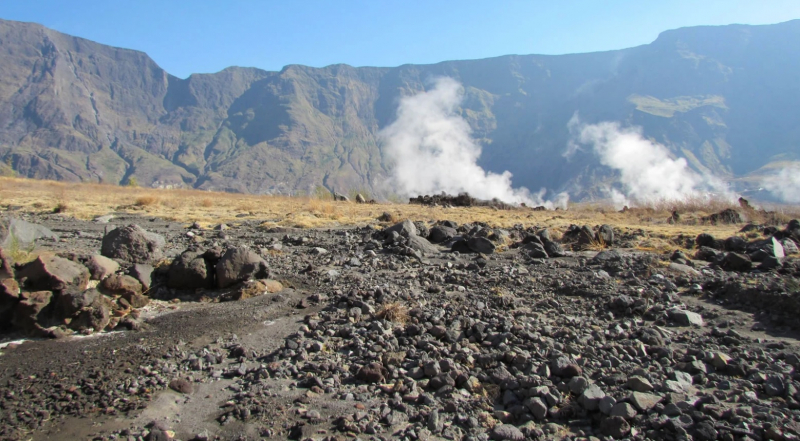
nationalreview.com












